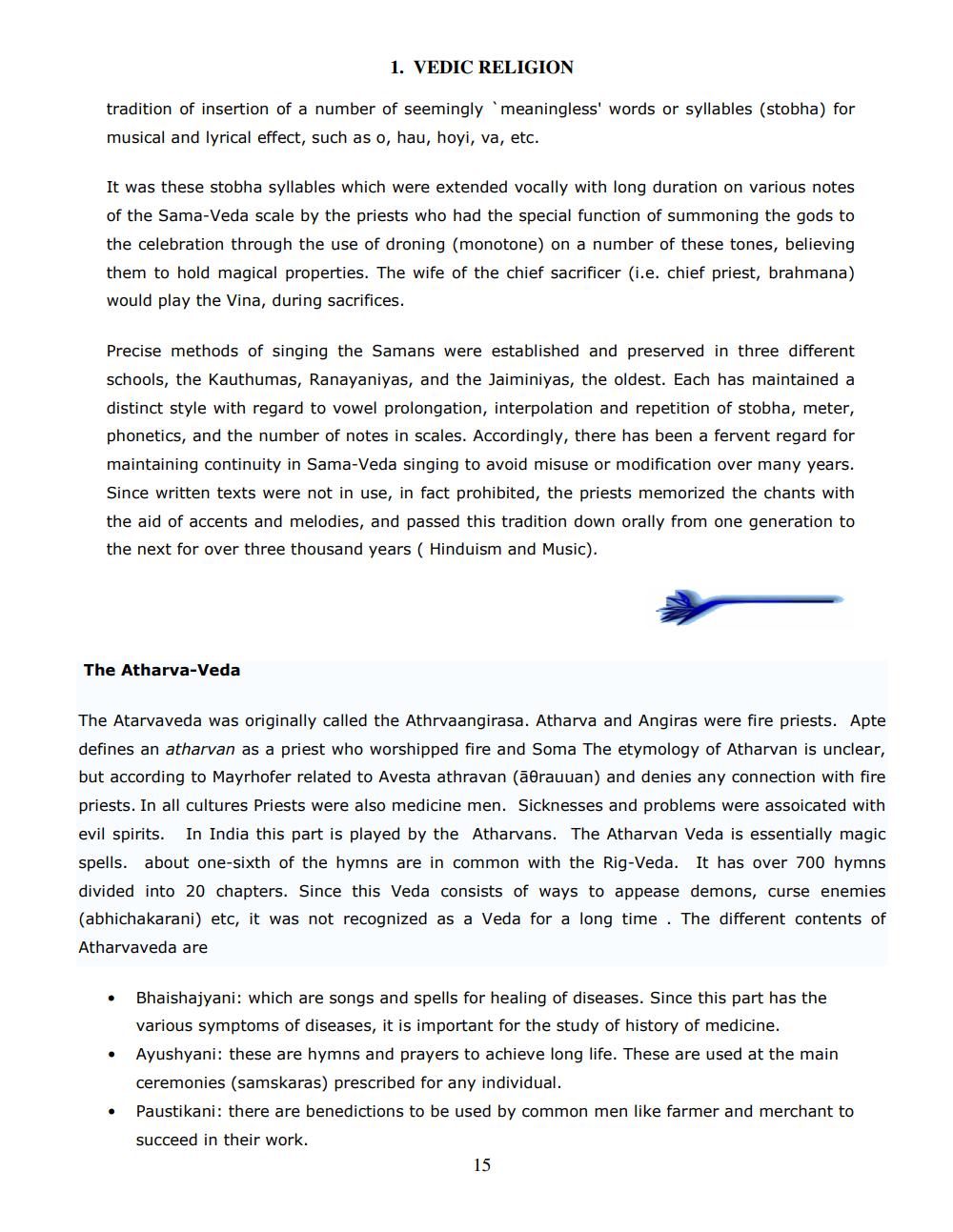________________
1. VEDIC RELIGION
tradition of insertion of a number of seemingly `meaningless' words or syllables (stobha) for musical and lyrical effect, such as o, hau, hoyi, va, etc.
It was these stobha syllables which were extended vocally with long duration on various notes of the Sama-Veda scale by the priests who had the special function of summoning the gods to the celebration through the use of droning (monotone) on a number of these tones, believing them to hold magical properties. The wife of the chief sacrificer (i.e. chief priest, brahmana) would play the Vina, during sacrifices.
Precise methods of singing the Samans were established and preserved in three different schools, the Kauthumas, Ranayaniyas, and the Jaiminiyas, the oldest. Each has maintained a distinct style with regard to vowel prolongation, interpolation and repetition of stobha, meter, phonetics, and the number of notes in scales. Accordingly, there has been a fervent regard for maintaining continuity in Sama-Veda singing to avoid misuse or modification over many years. Since written texts were not in use, in fact prohibited, the priests memorized the chants with the aid of accents and melodies, and passed this tradition down orally from one generation to the next for over three thousand years (Hinduism and Music).
The Atharva-Veda
The Atarvaveda was originally called the Athrvaangirasa. Atharva and Angiras were fire priests. Apte defines an atharvan as a priest who worshipped fire and Soma The etymology of Atharvan is unclear, but according to Mayrhofer related to Avesta athravan (ārauuan) and denies any connection with fire priests. In all cultures Priests were also medicine men. Sicknesses and problems were assoicated with evil spirits. In India this part is played by the Atharvans. The Atharvan Veda is essentially magic spells. about one-sixth of the hymns are in common with the Rig-Veda. It has over 700 hymns divided into 20 chapters. Since this Veda consists of ways to appease demons, curse enemies (abhichakarani) etc, it was not recognized as a Veda for a long time. The different contents of Atharvaveda are
Bhaishajyani: which are songs and spells for healing of diseases. Since this part has the various symptoms of diseases, it is important for the study of history of medicine.
Ayushyani: these are hymns and prayers to achieve long life. These are used at the main ceremonies (samskaras) prescribed for any individual.
Paustikani: there are benedictions to be used by common men like farmer and merchant to succeed in their work.
15




